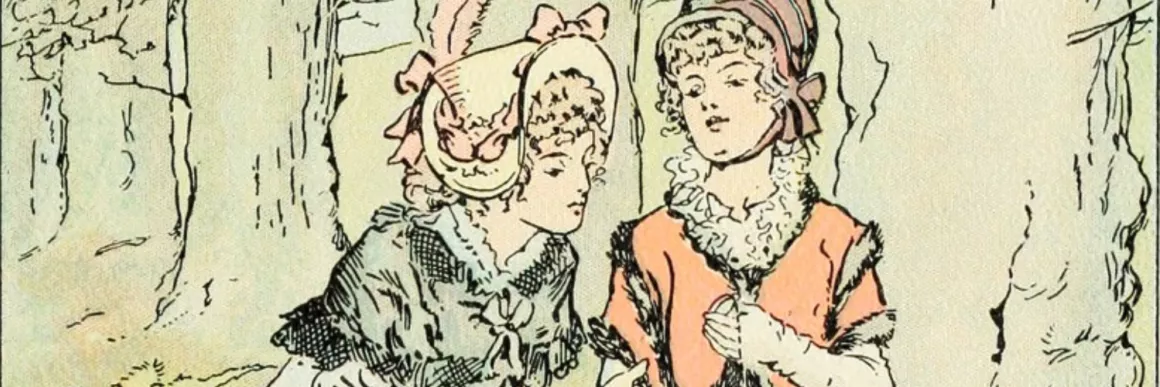The essays collected here describe curricular ideas, innovations, and practices that seek to move us beyond simple questions of Austen’s accessibility, relevance, and context. The contributors ask how we might enrich the teaching of Austen’s fiction by seeing her in conversation with manuscript culture, children’s literature, Harry Potter, or Romantic poetry. Collectively, these essays look to what it means to teach Austen in many kinds of classes and classrooms, with differently located learners and with a variety of texts, tools, and assignments.
Introduction: Teaching Jane Austen and the Scholarship of Teaching
Emily C. Friedman, Devoney LooserAbstract
In this introduction to the collection of essays, Looser and Friedman discuss the history of and the state of the scholarship of teaching Jane Austen, a surprisingly underdeveloped area of study, given Austen's ubiquity in the English curriculum at the college level.
Abstract
Throughout the nineteenth and most of the twentieth century, Jane Austen was not treated—in published criticism or in the classroom—in relation to the major male Romantic poets or thought to participate in the period’s defining events and concerns, either political or literary. Although these attitudes have begun to change, most scholarship on Austen still treats her either in isolation or in relation to other women writers, and many instructors report that they have trouble integrating Austen in Romantic period courses.
Abstract
This essay explores how digital and print editions of Jane Austen’s manuscript writing may be profitably integrated in upper-division undergraduate and graduate courses.
Austen's Competition: Teaching the Nineteenth and Twenty-First Century Literary Marketplaces
Emily C. FriedmanAbstract
This article discusses the use of research-intensive editing projects in order to better understand early nineteenth-century literary marketplaces, as well as the current realities around book production.
Abstract
This essay describes a freshman seminar called “Advice about Love and the Literary Narrator.” After touching on Pride and Prejudice’s opening sentence and some consequences of the belief that one can take advice from a fiction or its narrator, I track a version of the course that moves from Ovid’s Amores to Capellanus’s courtly love treatise, Cervantes’s Don Quixote, and the proposal scenes of the eighteenth-century novel. I conclude by showing how a proposal scene in Emma illuminates earlier models of advising.
Abstract
This essay describes an advanced undergraduate course on “Jane Austen and the Gothic.” Breaking with a literary-historical narrative of development in which Austen corrects the Gothic’s excess, the course interspersed a selection of Austen’s novels with Gothic fiction of the 1780s and 90s to explore what these works share, and what their differences could prompt students to see about Austen’s fiction, about the Gothic, and about novels and novel reading in general.
Abstract
This essay explores the challenges of teaching literature in the unique setting of higher education programs in correctional institutions. Based on the author's experience teaching a romantic-literature course in prison, it explores some of the cultural and logistical obstacles at play in prison education and possibilities for how these obstacles can be successfully negotiated. Finally, it suggests possible examples of how to adapt Austen for other nontraditional audiences.
Abstract
This article argues that Romantic-era children’s literature provides a useful means of introducing first-year students to Austen’s novels. By comparing children's decision-making processes in texts for young readers to the dilemmas faced by novel heroines, students better understand Austen’s era and the stakes of her heroines’ choices.
Abstract
As part of a fall 2011 honors seminar on Jane and the Austenites, my students analyzed various cinematic adapations of Austen's novels. When they viewed a clip involving Alan Rickman, who played Colonel Brandon in Ang Lee's production of Sense and Sensibility (1995), they immediately linked the actor to his role as Professor Severus Snape in the Harry Potter films. This essay examines how students utilized their knowledge of the Harry Potter series and films as a gateway for a close reading of Sense and Sensibility.
Abstract
This essay takes account of the author’s evolving approach to incorporating popular culture materials and historic editions into her teaching of Austen. It outlines a philosophy of teaching Austen to a broad undergraduate population in liberal-arts colleges, as well as practical classroom strategies for undergraduate courses on writing and literature at all levels. Also included are students’ responses to encounters with historic editions.
Abstract
An annotated bibliography of resources useful for teaching Jane Austen.

